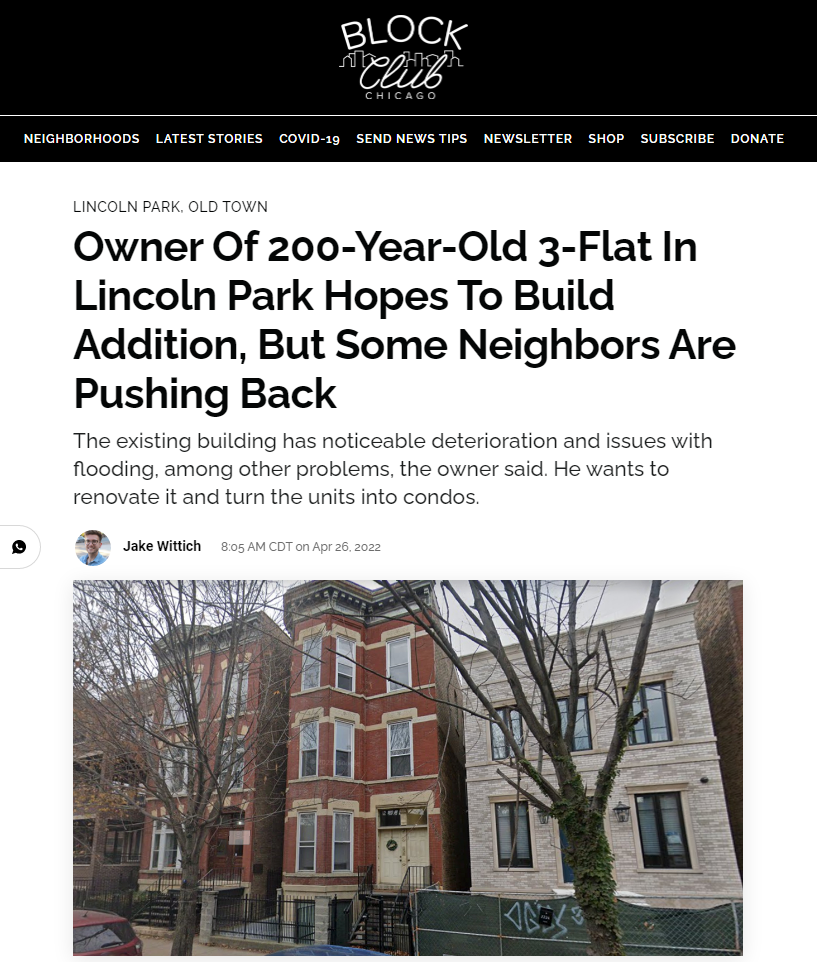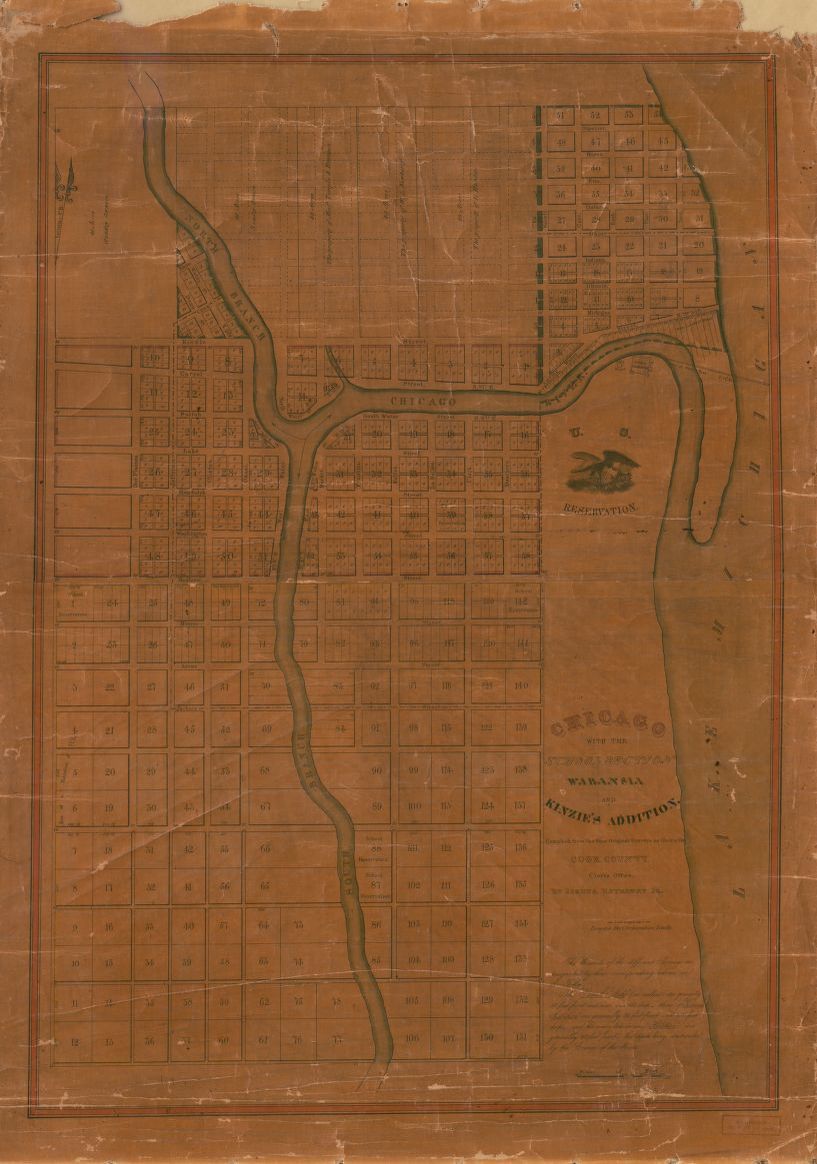This headline made me laugh so loudly I scared Cassie:

The article explains:
The building at 2222 N. Halsted St. went up in 1808 and is considered “orange-rated” in the Sheffield Historic District, meaning it possesses some qualities that contribute to the historical nature of the area.
Um. No. There was not a 3-flat sticking up out of the prairie 5 kilometers from the nearest European settlement in the middle of Potawatomi land four years before the Fort Dearborn Massacre. Chicago looked like this in 1812:
.jpg)
Here's a map of Chicago from 1820 from the Library of Congress; notice that the northern border of the city was Kinzie Street, still about 5 kilometers from 2222 N. Halsted:

The area around Halsted and Webster was built up in the 1880s. My hypothesis, which I hope Block Club Chicago chases down, is that the building actually dates from 1888, as it looks like a typical 3-flat from that era, and it makes sense that somewhere along the line someone read the second 8 as a 0.
I reached out to the reporter, who replied:
I've triple-checked the recording of the meeting, and the attorneys definitely said 1808, but you're totally right. We're tweaking the story until we have clarification from them on when the building was constructed.
OK, sure, except the date of 1808 doesn't pass the laugh test if you know anything at all about Chicago history. I can understand a reporter transcribing a meeting and triple-checking what someone at the meeting said. But the reporter's job requires him in this case to do the 15 minutes of work to confirm the assertion. And the editor's job is to push back on the reporter before publishing a ridiculous headline.
I'm taking them to task for this because this error really shakes my confidence in the Block Club editorial staff. If you publish something this laughably wrong, can I trust what you report about the city council? About political organizations that want more publicity for their own points of view? About people with long records of lying their asses off?
I replied to the reporter that I'll bet a $50 donation to Block Club that it's really 1888. I hope the bet motivates him to do his damn job and get a relevant fact corrected sometime today.
Update: The reporter checked with the Cook County Assessor's Office, and yes, they say it's from 1886. The new copy reads as follows:
The building at 2222 N. Halsted St. is considered “orange-rated” in the Sheffield Historic District, meaning it possesses some qualities that contribute to the historical nature of the area. The Cook County Assessor’s Office lists the building as 135 years old.
That makes a lot more sense.